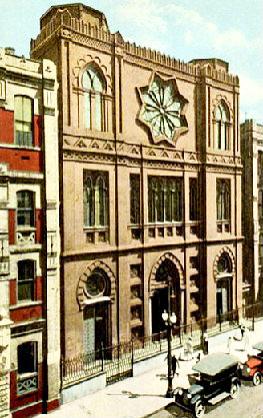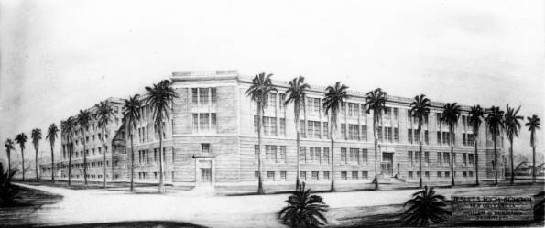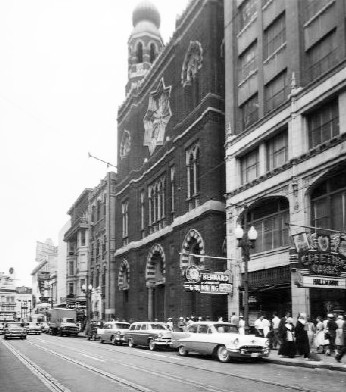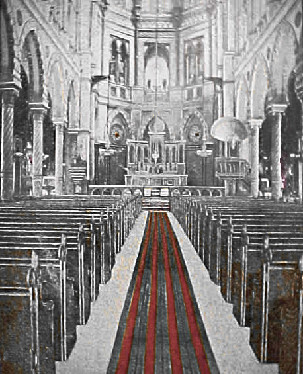| Second Church of the Immaculate Conception, 1959 |
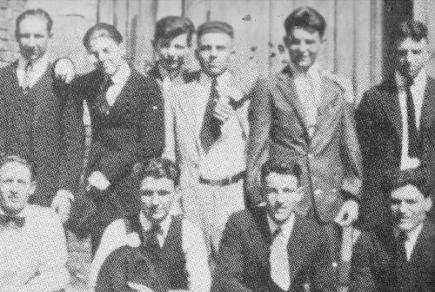
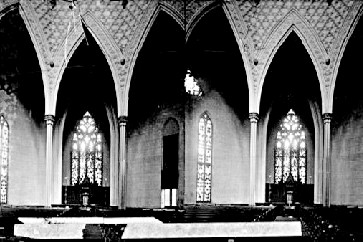
| First building: left, 1924; above, 1880 |
| Church of the Immaculate Conception ~ & ~ Jesuit High School |
| Above and right, first bulding, 1890 |
| Jesuit College, 1925, Baronne and Common Streets, now the site of the Pere Marquette Building; thanks to Sharon Dean for this photo. |
| Sketch of the proposed new Jesuit school, to be located on N. Carrollton Avenue |
| A newspaper clipping picturing several unidentified Jesuit students, 1920's. |
| Jesuit High School, 1920's |
| The link to this page is: http://old-new-orleans.com/NO_Jesuit.html Jesuit High School Class of 1948 Jesuit High School Class of 1949 Back to Old New Orleans Whispers - Home |
The history of the Jesuits in New Orleans goes back to 1720, when the first Jesuit priest
arrived to serve as an emissary of King Louis XV. In 1725, the Jesuits entered into a
contract with the Company of the West to take care of the Native Americans in the
Louisiana Territory. Eventually, having outgrown their quarters in the French Quarter,
the priests secured land from Bienville that came to be known as the Jesuit Plantation,
which covered what is now the Central Business District of the city.
In 1851, construction began on the Church of the Immaculate Conception on Baronne
Street in the CBD, on land that was once a part of the Jesuit Plantation. Father John
Cambiasco was the architect, builder and, to a great extent, benefactor of the church,
which was completed in 1857. An adjoining building was constructed, housing the
residence and a college for young men.
In the 1920's, the adjacent building was sold and the college moved its campus to
Carrollton Avenue, where it is now known as Jesuit High School.
The pile driving during the construction of the Pere Marquette Building on the former
site of the college, took a tremendous toll on the church, weakening the structure
considerably. But it was ultimately the dynamite used in the construction of Canal Bank
a half block away that doomed the church as structurally unsafe. In 1928, Father
Cambiasco's church had to be disassembled brick by brick. Reconstruction began
immediately and the rebuilt church opened in 1930. Since the church contains most of
the original fixtures, as well as, the architectural features of the first building, it is
considered a continuation, rather than a replacement of the original.
The church still stands today on land where the Jesuits once grew sugar, tobacco and
oranges. And it is still known among locals as the Jesuit Church. -- Nancy
arrived to serve as an emissary of King Louis XV. In 1725, the Jesuits entered into a
contract with the Company of the West to take care of the Native Americans in the
Louisiana Territory. Eventually, having outgrown their quarters in the French Quarter,
the priests secured land from Bienville that came to be known as the Jesuit Plantation,
which covered what is now the Central Business District of the city.
In 1851, construction began on the Church of the Immaculate Conception on Baronne
Street in the CBD, on land that was once a part of the Jesuit Plantation. Father John
Cambiasco was the architect, builder and, to a great extent, benefactor of the church,
which was completed in 1857. An adjoining building was constructed, housing the
residence and a college for young men.
In the 1920's, the adjacent building was sold and the college moved its campus to
Carrollton Avenue, where it is now known as Jesuit High School.
The pile driving during the construction of the Pere Marquette Building on the former
site of the college, took a tremendous toll on the church, weakening the structure
considerably. But it was ultimately the dynamite used in the construction of Canal Bank
a half block away that doomed the church as structurally unsafe. In 1928, Father
Cambiasco's church had to be disassembled brick by brick. Reconstruction began
immediately and the rebuilt church opened in 1930. Since the church contains most of
the original fixtures, as well as, the architectural features of the first building, it is
considered a continuation, rather than a replacement of the original.
The church still stands today on land where the Jesuits once grew sugar, tobacco and
oranges. And it is still known among locals as the Jesuit Church. -- Nancy
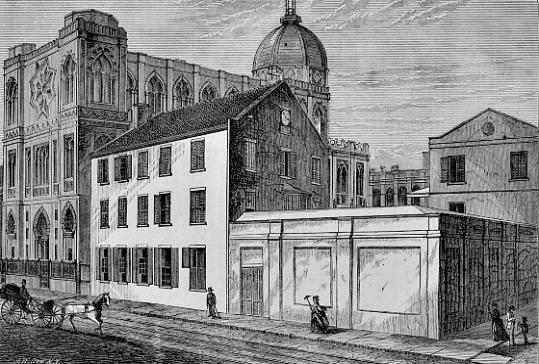
| First building, sketch ca. 1873 |


